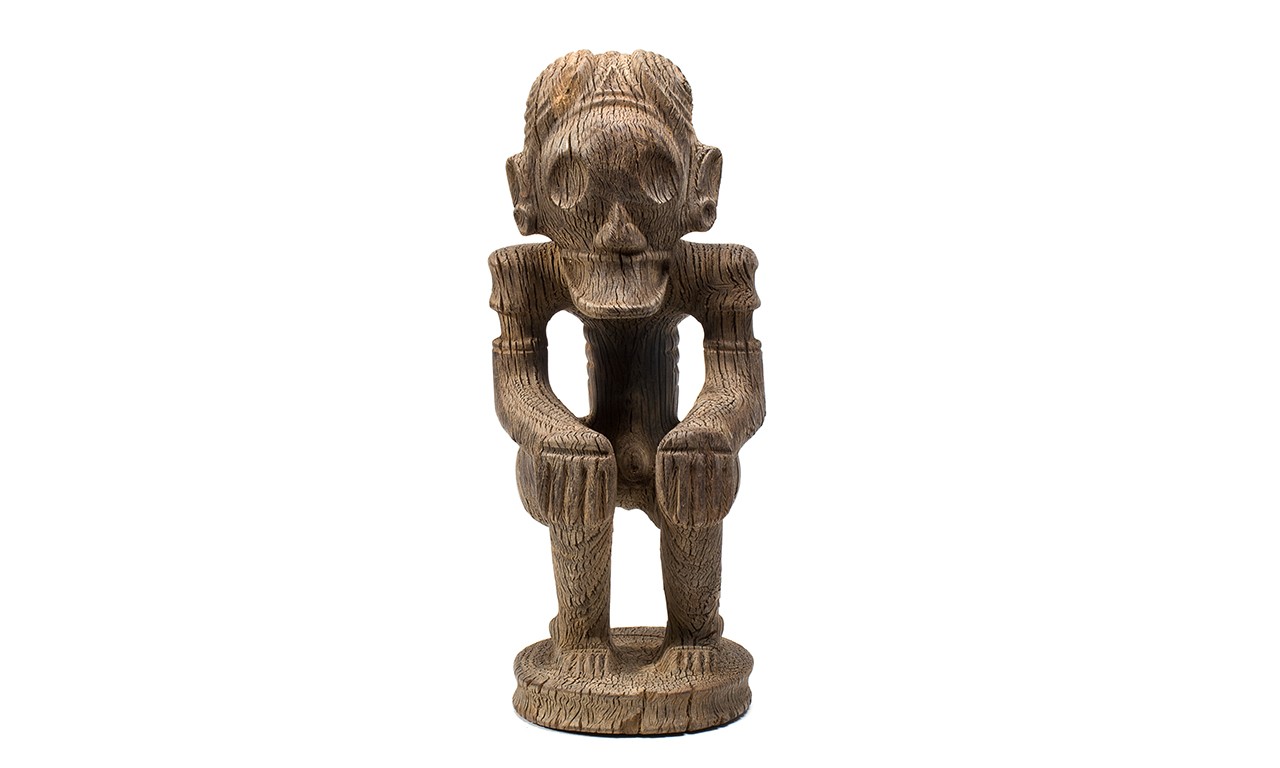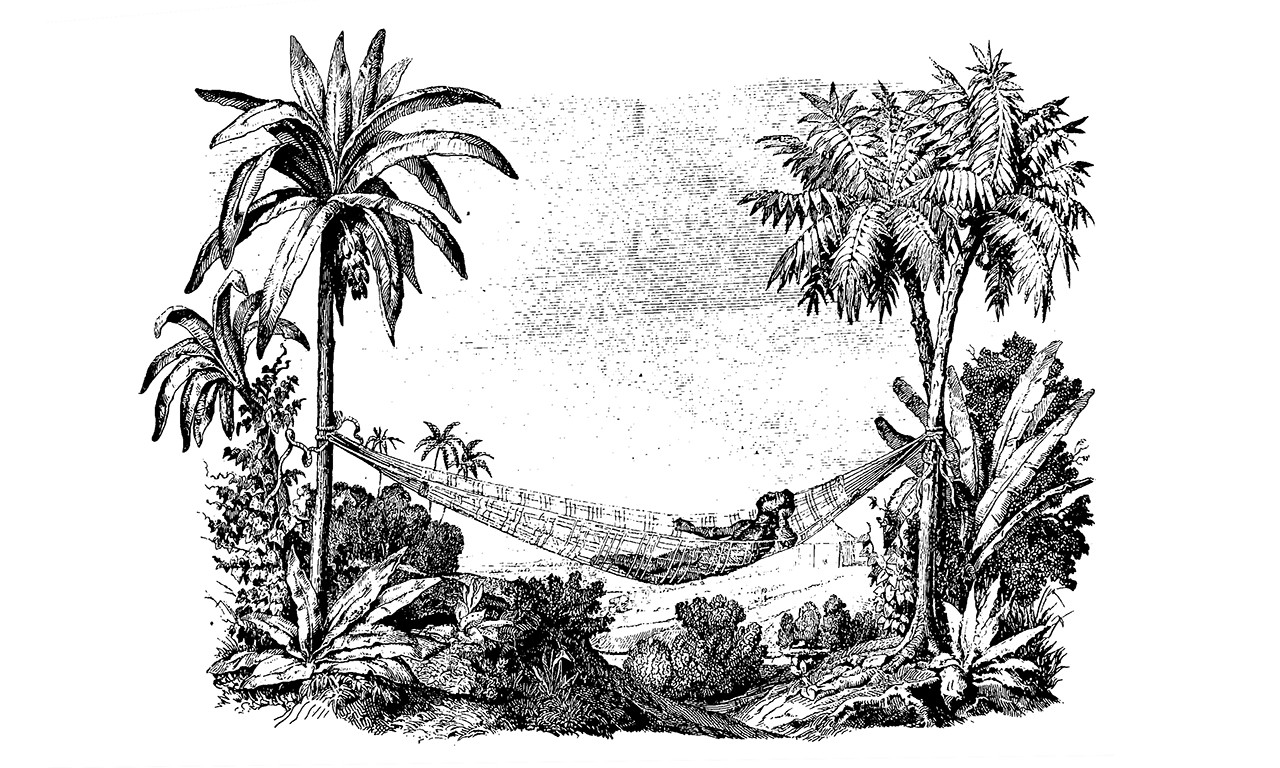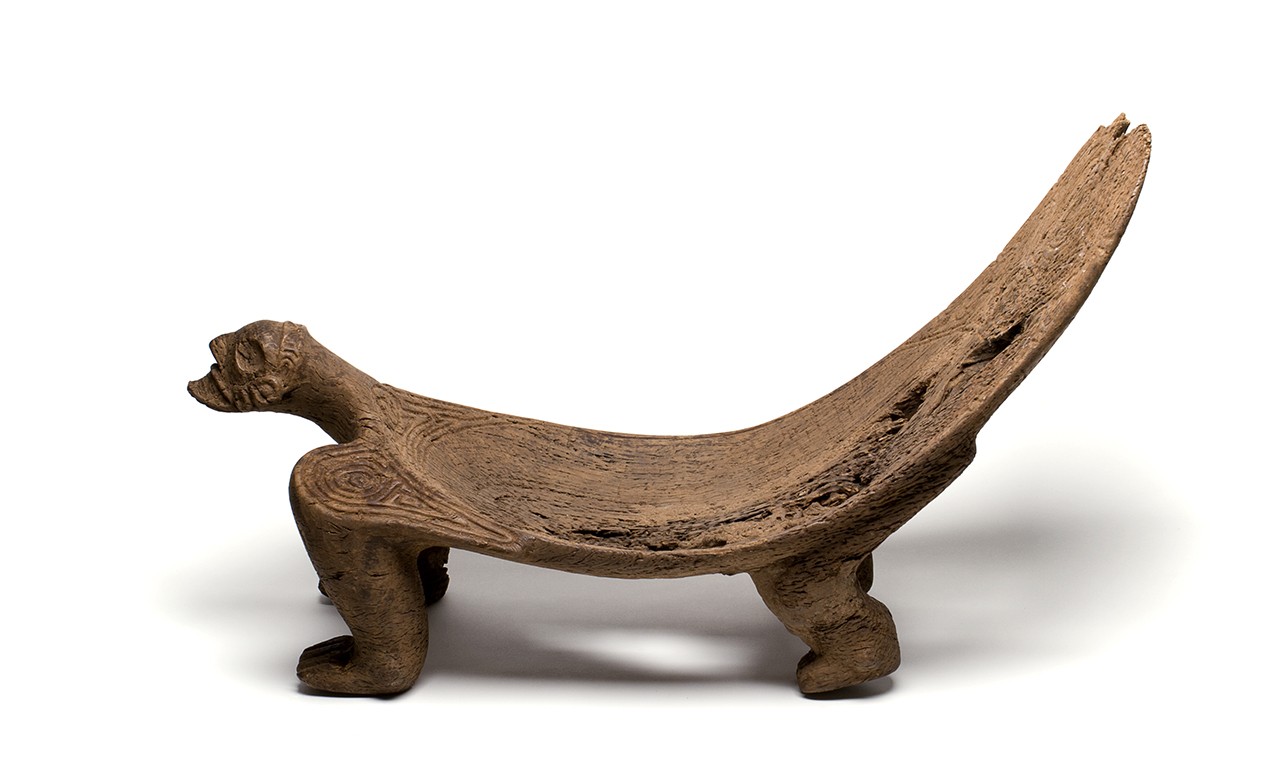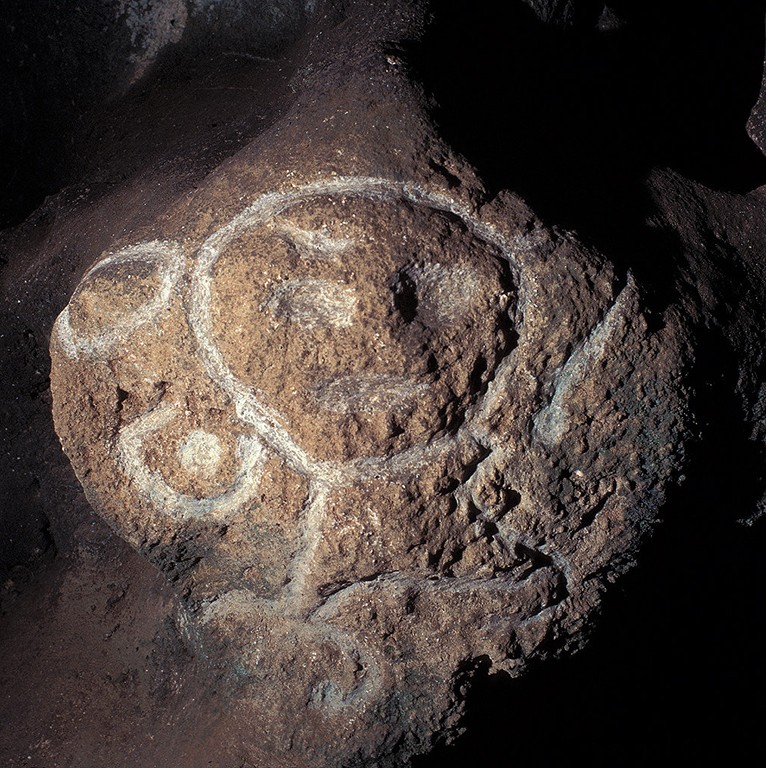 |
Deity Figure (Zemí), 1100-1500
Taino culture; Dominican Republic
Wood; 13 3/8 x 5 3/4 x 6 1/4 in.
2005.38.1
Gift of Nancy Nicola and Warren Lampkin, In memory of Armand Labbe |
Far from Home
Many of us were first taught about Columbus’ new sea route to the Americas in a fun limerick, but the fallen explorer’s time in the western hemisphere is problematic to say the least. After sailing the ocean blue, Columbus arrived somewhere in what is now the Bahamas and, disembarking, met the Taíno who inhabited much of the Greater Antilles and northern Lesser Antilles islands. It is estimated that at that time there were between 100,000 and 1,000,000 Taíno on the island of Hispaniola alone. Some thirty years later only 32,000 Taíno remained. Along with the awful loss of human life, Taíno culture was irreparably shattered. The objects featured in this post are some of the few remaining shards of evidence documenting the religion and daily life of the Taíno. Here we explore some what is known of Taíno culture, their material wealth, and the ways in which their cultural heritage was preserved.
 |
| Taíno man on a hammock after Oviedo y Valdes, 1851-55, vol. 1, pl. 1 |
To Know the Taíno
The peoples who would come to be known as the Taíno migrated to the West Indies in multiple waves beginning as long ago as several thousand years before the common era. Their name originally comes from their word for noble or good and was one which they used to distinguish themselves from their neighbors. The hundreds of thousands or even millions of Taíno in the Caribbean lived in villages of up to two-thousand inhabitants with central plazas surrounded by large multi-family homes. They used these spaces for dancing, played ball games, had an advanced system of farming using alluvial soil. Like most other pre-Columbian cultures, the Taíno people were animistic, believing that all objects housed vital forces that could be communed with by shamans or caciques (village chieftains).
Vermiculate Patterns
The harrowing, skeletal expressions of the Taíno’s zemí figures were depictions of several supernatural forces including deities and ancestors, if properly presented with offerings they could be used to consult the natural geometries which connected humans to both the celestial sphere and the underworld, and see looming disasters or even heal the sick. Zemí were most often used at regular cohoba ceremonies by shamans or caciques who would fast for several days and then inhale a psychoactive mixture to go into a trance state. This figure may be Maquetaurie Guayaba, the lord of the realm of the dead, or Baibrama, the giver of cassava and a symbol of growth. The motifs and style of this carving all tell a lot about it. The sunken eyes and emaciation likely draw a parallel to the fasting of the user. The geometric designs are the same mentioned above, normally invisible to all except those in a trance state.
 |
Ceremonial Stool (Duho), 1000-1500
Taino culture; Haiti or Dominican Republic
Wood; 13 1/2 x 9 x 24 1/2 in.
2004.36.1
Bowers Museum General Acquisition Fund Purchase |
Seat of Power
Whereas the zemí tended to be reserved for special occasions and use in religious rituals, the function of the duho was primarily a prestige object, though it was regularly used in the same shamanic ceremonies as the zemí. The stools were only owned by caciques and members of the elite Nitaíno caste, composed of nobles and shaman. They were mostly carved from wood, such is the case with this example, but were also made from stone and coral and were in many cases decorated gilded by pounding the gold on the islands into sheets or inlaid with shell. The anthropomorphic carving of the head and the feet is another depiction of zemí spirits, in many cases the figural carvings of a duho would replicate that of a cacique’s zemí. It has also been noted that the chimeric form of the four-legged and man may depict a shaman’s transformation during a trance. Similar stools are still used by indigenous peoples in South America, though it is estimated that only 100 or so duho still exist in the world.
 |
Photo by Dave Bunnell of Taíno petroglyphs, 2006
Licensed under CC BY-SA 2.5 |
Zemí Arid
The objects featured in this post represent two of the most valuable objects within Taíno society and their survival is not at all coincidental. Wooden objects, even those carved from dense woods tend to fare poorly being exposed to the tropical elements seen in the Caribbean for prolonged periods. Archaeological evidence suggests that Taíno groups on multiple islands used caves for various rituals, burials, and sometimes as temporary refuge. Most of the wooden objects that survived the Spanish colonization of the islands were found in these caves which is certainly the case in part because of because of the relatively arid environment of the caves, a factor which would also explain the fissuring of the wood. During the proselytization of the islands records tell of large quantities of pagan icons being destroyed, and many scholars believe that the Taíno hid these ritual objects in caves to save them from being destroyed.
Text and images may be under copyright. Please contact Collection Department for permission to use. Information subject to change upon further research.





Comments